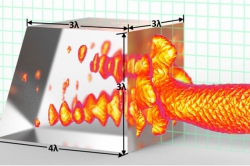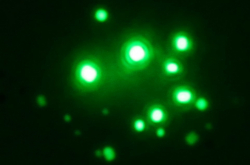Capillary blood circulation plays a crucial role in tissue metabolism. There are more than several billions capillaries in a human body, and malfunctions in the work of such a big and complex system can lead to severe effects like migraines or strokes. Nevertheless, despite their importance for the overall health, capillary coordination mechanisms are still not fully decoded. To fill this gap, scientists are developing new and non-invasive research methods.
One of these innovative methods is optical plethysmography. A result of a collaboration between Russian and Finnish scientists, plethysmography gives a graphic representation of how the blood flow volume changes under functional overloads. This data is necessary for assessing the vessels state. Although this method is usually used to evaluate the general blood circulation, the scientists have also created a local capillary circulation monitoring system which consists of green LEDs, video camera with polarization filtration, and special software. When the red blood cells are exposed to green light, they change the polarization of the reflected wave. The camera only registers the signal of changing polarization which the computer then uses to track the red blood cells distribution. Their buildup in certain places implies that the intensity of the blood flow there is increased by the opening of additional capillaries.
The effectiveness of the new method was tested in an experiment on capillary blood circulation during migraines. Scientists conducting the experiment wanted to establish whether the nervous regulation of capillary circulation in a person suffering from migraines differs from that of a healthy person. Participants had pepper patches applied on their skin. Pepper patches contain capsaicin, a substance which excites nerve endings and in normal conditions stimulates the opening of additional capillaries to increase blood flow.
"We found out that patients suffering from migraines had an irregular response to capsaicin. This can attest to malfunctions in molecular mechanisms of the blood flow regulation. Nevertheless, before we draw any final conclusions, further investigations are necessary. Now we have an effective tool that will undoubtedly bring us closer to the solution. New optic discoveries allow us to simultaneously evaluate a large surface area and in only 30 seconds gain information on the dynamics of red blood cells distribution in the entire field of view. Conventional sensors would never give such a result," says Alexei Kamshilin from ITMO University.
This wasn’t the first ITMO University research project on blood circulation during migraines, but its novelty lies in the fact that such diagnostic system for capillary blood circulation can be used for more than just migraine research. It is also applicable to studying strokes and diabetes; moreover, combined with an endoscope, the system can be used for examining the microcirculation in internal organs. The method also has potential for monitoring cerebral cortex blood supply during neurological operations.
The project was supported by the Russian Science Foundation, grant №15–15-20012.
Reference: Novel capsaicin-induced parameters of microcirculation in migraine patients revealed by imaging photoplethysmography. Alexei A. Kamshilin et al.The Journal of Headache and Pain, 18th June, 2018.




